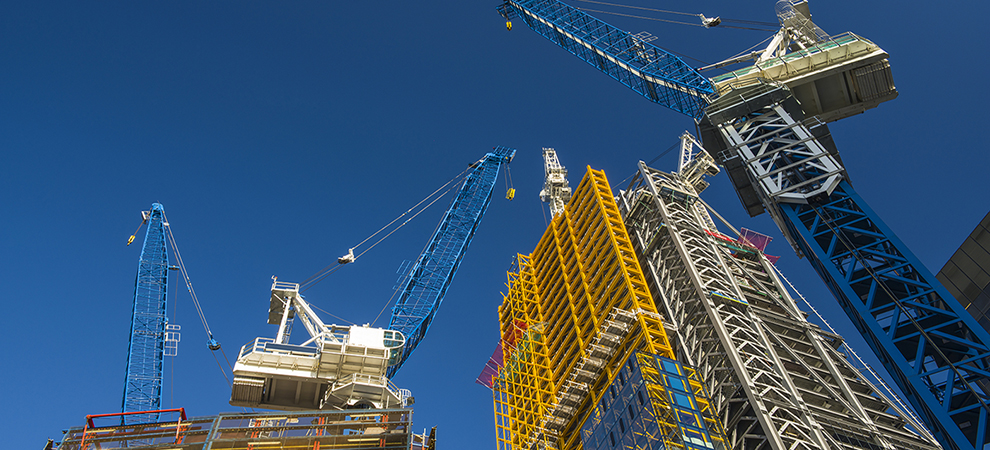The WPJ
THE WORLD PROPERTY JOURNALReal Estate Facts Not Fiction
Residential Real Estate News

Housing Starts, Building Permits in U.S. Post Significant Gains in June
Residential News » Miami Edition | By Michael Gerrity | July 20, 2020 9:00 AM ET
According to a new report by the U.S. Housing and Urban Development and Commerce Department, led by solid single-family production, total housing starts increased 17.3 percent in June 2020 to a seasonally adjusted annual rate of 1.19 million units.
The June 2020 reading of 1.19 million starts is the number of housing units builders would begin if they kept this pace for the next 12 months. Within this overall number, single-family starts increased 17.2 percent to an 831,000 seasonally adjusted annual rate, after an upward revision from the May estimate. The multifamily sector, which includes apartment buildings and condos, increased 17.5 percent to a 355,000 pace.
"Fueled in part by record low mortgage rates, builders are seeing solid demand for housing despite the challenges of the virus and elevated unemployment," said Chuck Fowke, chairman of the National Association of Home Builders. "Demand is growing in lower density markets, including exurbs and small metros."
"Single-family construction is expanding off April lows due to lean inventories of new and existing homes," said NAHB Chief Economist Robert Dietz. "However, builders face challenges in growing costs, particularly rising prices for lumber."
On a regional and year-to-date basis (January through June of 2020 compared to that same timeframe a year ago), combined single-family and multifamily starts are 2.2 percent higher in the Midwest, 0.2 percent higher in the South, 2.9 percent higher in the West and 5.4 percent lower in the Northeast.
Overall permits increased 2.1 percent to a 1.24 million unit annualized rate in June. Single-family permits increased 11.8 percent to an 834,000 unit rate. Multifamily permits decreased 13.4 percent to a 407,000 pace.
Looking at regional permit data on a year-to-date basis, permits are 3.4 percent higher in the South, 8.8 percent lower in the Northeast, 2.3 percent lower in the Midwest and 3.9 percent lower in the West.
The National Association of Realtors chief economist Lawrence Yun commented, "The housing market is hot. Homebuyers have swiftly moved into the market to take advantage of the unimaginably low mortgage rates. But inventory is lacking with a sizable backlog of buyers getting outbid by others. More homes therefore need to be built to help relieve the housing shortage. The latest increase in housing starts of 1.186 million (17% gain) is only a bare, partial recovery after a shutdown. The country needs at least 1.5 million units. Building more homes also has an added benefit of boosting the local economic growth. In the meantime, expect multiple offers to be common on many mid-priced homes for the remainder of the year."
Sign Up Free | The WPJ Weekly Newsletter
Relevant real estate news.
Actionable market intelligence.
Right to your inbox every week.
Real Estate Listings Showcase
Related News Stories
Residential Real Estate Headlines
- More Americans Opting for Renting Over Homeownership in 2024
- BLOCKTITLE Global Property Tokenization Platform Announced
- Small Investors Quietly Reshaping the U.S. Housing Market in Late 2024
- Greater Miami Overall Residential Sales Dip 9 Percent in November
- U.S. Home Sales Enjoy Largest Annual Increase in 3 Years Post Presidential Election
- U.S. Housing Industry Reacts to the Federal Reserve's Late 2024 Rate Cut
- U.S. Home Builders Express Optimism for 2025
- Older Americans More Likely to Buy Disaster-Prone Homes
- NAR's 10 Top U.S. Housing Markets for 2025 Revealed
- U.S. Mortgage Delinquencies Continue to Rise in September
- U.S. Mortgage Rates Tick Down in Early December
- Post Trump Election, U.S. Homebuyer Sentiment Hits 3-Year High in November
- Global Listings Aims to Become the Future 'Amazon of Real Estate' Shopping Platform
- Greater Las Vegas Home Sales Jump 15 Percent in November
- Ultra Luxury Home Sales Globally Experience Slowdown in Q3
- World Property Exchange Announces Development Plan
- Hong Kong Housing Market to Reach Equilibrium in Late 2025
- Construction Job Openings in U.S. Down 40 Percent Annually in October
- U.S. Mortgage Applications Increase in Late October
- World Property Markets, World Property Media to Commence Industry Joint-Venture Funding Rounds in 2025
- New Home Sales Hit 2 Year Low in America
- U.S. Pending Home Sales Increase for Third Consecutive Month in October
- Pandemic-led Residential Rent Boom is Now Fizzling in the U.S.
- Emerging Global Real Estate Streamer WPC TV Expands Video Programming Lineup
- 1 in 5 Renters in America Entire Paycheck Used to Pay Monthly Rent in 2024
- U.S. Home Sales Jump 3.4 Percent in October
- Home Buyers Negotiation Power Grows Amid Cooling U.S. Market
- Canadian Home Sales Surge in October, Reaching a Two-Year High
- Greater Orlando Area Home Sales Continue to Slide in October
- U.S. Mortgage Credit Availability Increased in October
- U.S. Mortgage Rates Remain Stubbornly High Post Election, Rate Cuts
- Construction Input Prices Continue to Rise in October
- BETTER MLS: A New Agent and Broker Owned National Listings Platform Announced
- Home Prices Rise in 87 Percent of U.S. Metros in Q3
- Caribbean Islands Enjoying a New Era of Luxury Property Developments
- The World's First 'Global Listings Service' Announced
- Agent Commission Rates Continue to Slip Post NAR Settlement
- Market Share of First Time Home Buyers Hit Historic Low in U.S.
- Greater Palm Beach Area Residential Sales Drop 20 Percent Annually in September
- Mortgage Applications in U.S. Dip in Late October
Reader Poll
Marketplace Links
This website uses cookies to improve user experience. By using our website you consent in accordance with our Cookie Policy. Read More





